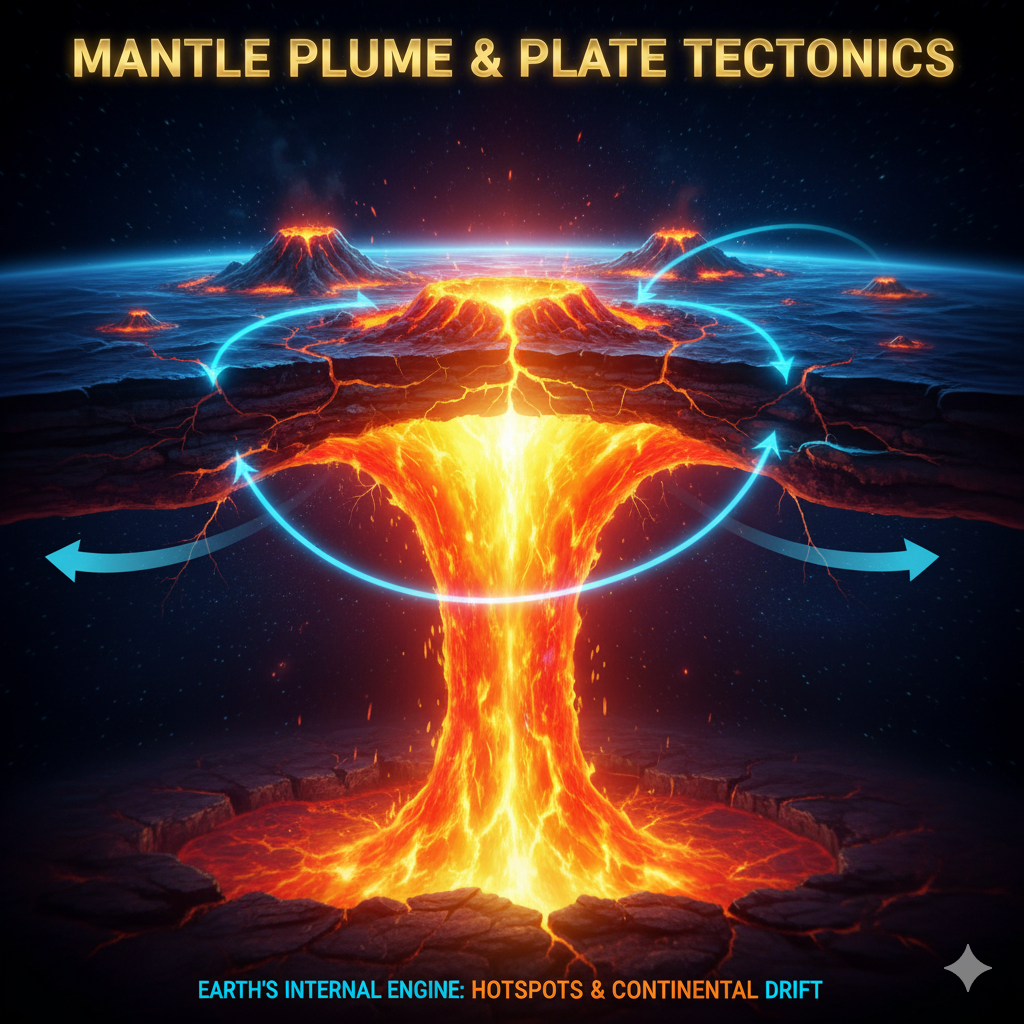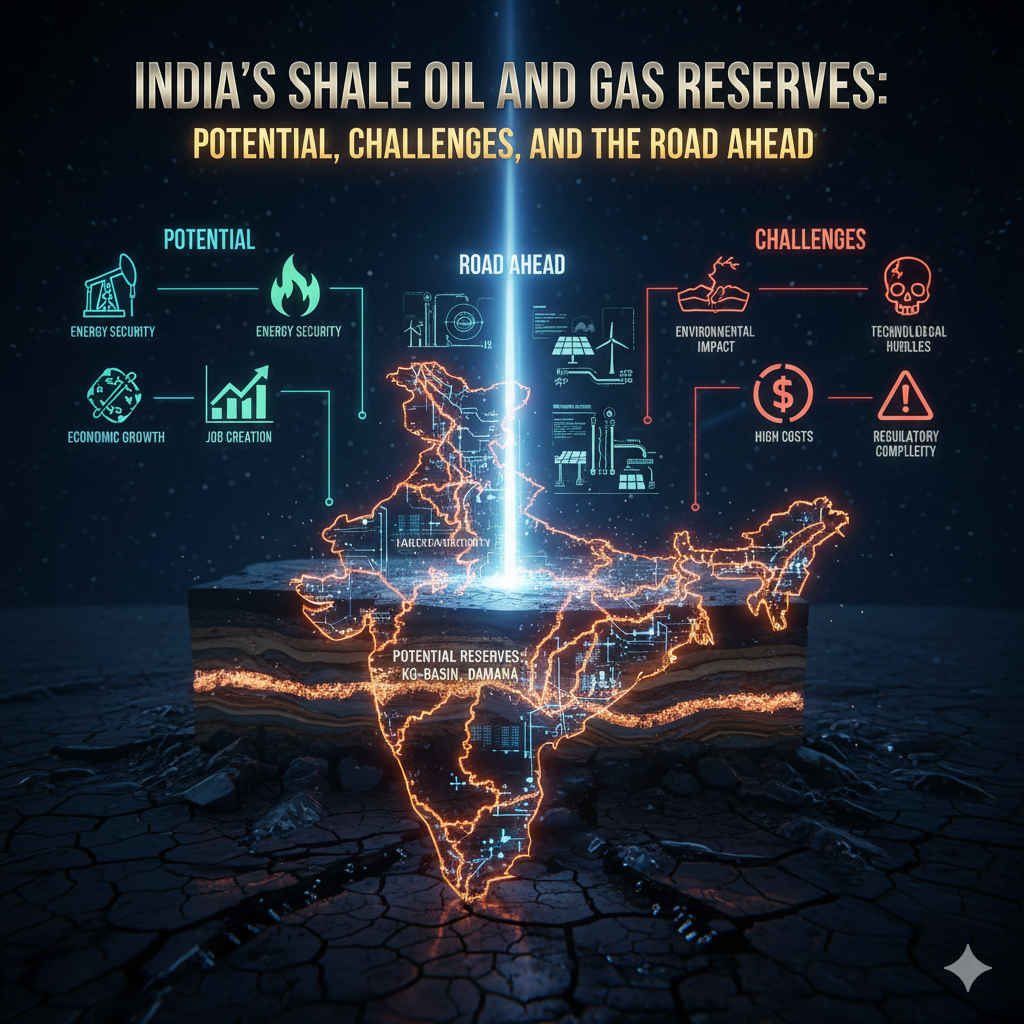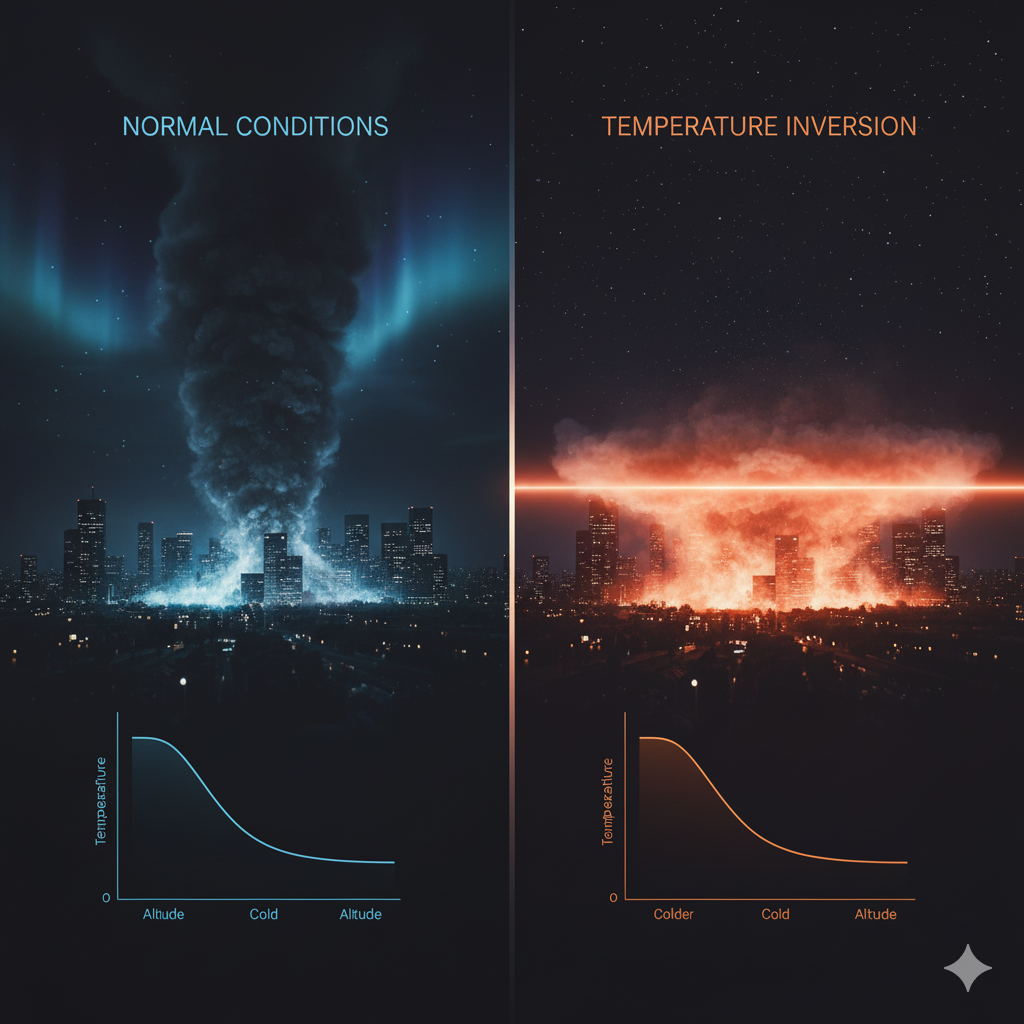Introduction
The Earth’s interior is a dynamic system where enormous forces operate beyond human perception. Among the processes that shape the planet’s geological features, mantle plumes hold a significant position. They are not only key to understanding the internal dynamics of the Earth but also crucial in explaining the mechanisms of volcanism, continental breakup, and plate tectonics. Although the theory of plate tectonics provides a comprehensive explanation of lithospheric movements, it does not fully explain all intraplate volcanic activities or the occurrence of certain hotspots. This is where the concept of mantle plumes becomes important, offering a complementary mechanism to the broader tectonic framework.
Understanding the Mantle and Its Dynamics
The Earth is divided into three primary layers: the crust, mantle, and core. The mantle, extending from the base of the crust to the outer core, is a zone of solid rock that behaves plastically over geological timescales. Within this mantle, convection currents generated by heat transfer from the Earth’s core drive the movement of tectonic plates.
- The upper mantle (including the asthenosphere) allows the lithospheric plates to “float” and move.
- The lower mantle extends down to the core-mantle boundary, where temperatures and pressures are extremely high.
Mantle plumes originate in this deeper region and rise upward through the mantle, playing a critical role in Earth’s internal and surface dynamics.
What is a Mantle Plume?
A mantle plume is a localized column of hot, solid material that rises from deep within the mantle, possibly from the core-mantle boundary, to the Earth’s surface. Unlike convection currents, which involve widespread mantle circulation, plumes are thought to be narrow, focused upwellings of anomalously hot material.
Key characteristics of mantle plumes include:
- Origin: Believed to start near the core-mantle boundary (~2,900 km deep).
- Temperature: Hotter than the surrounding mantle, enabling them to buoyantly rise.
- Shape: Often compared to a “mushroom,” with a narrow stem (conduit) and a broader head near the surface.
- Impact: Responsible for volcanic hotspots, flood basalts, and rifting events.
Historical Development of the Mantle Plume Concept
The mantle plume hypothesis was first proposed by W. Jason Morgan in 1971, as a way to explain volcanic island chains such as Hawaii that could not be accounted for by plate boundary volcanism. His idea suggested that plumes are stationary relative to the moving lithospheric plates, leaving behind volcanic trails that record plate motion. Over the years, this hypothesis has undergone scrutiny, debates, and refinements, but it remains an influential concept in Earth sciences.
Structure of a Mantle Plume
A typical mantle plume consists of two parts:
- Plume Head
- Large, bulbous structure at the upper end.
- Associated with massive volcanic outpourings such as continental flood basalts.
- Example: Deccan Traps in India, linked to the Reunion mantle plume.
- Plume Tail
- Narrow, cylindrical conduit that sustains long-term volcanism.
- Produces volcanic island chains and seamounts.
- Example: The Hawaiian-Emperor seamount chain.
This structure helps differentiate between short-lived, catastrophic volcanic events and prolonged hotspot activity.
Evidence Supporting Mantle Plumes
1. Hotspot Volcanism
Hotspots such as Hawaii, Yellowstone, Reunion, and Iceland lie far from plate boundaries, suggesting a deep-seated heat source inconsistent with conventional tectonic activity.
2. Volcanic Island Chains
The linear alignment of volcanic islands, where older volcanoes are progressively eroded and submerged while new ones form, indicates that a fixed mantle plume is being overridden by a moving lithospheric plate.
3. Seismic Tomography
Advanced imaging techniques reveal low-velocity zones in the mantle, interpreted as hot, buoyant plumes.
4. Geochemical Signatures
Lavas from plume-related volcanoes often show unique isotopic compositions, different from mid-ocean ridge basalts, implying deep mantle sources.
5. Flood Basalts
Large igneous provinces, such as the Deccan Traps, Siberian Traps, and Parana basalts, are linked to plume heads, providing strong geological evidence.
Role of Mantle Plumes in Plate Tectonics
Mantle plumes play an important role in shaping tectonic and surface processes:
1. Hotspot Volcanism and Intraplate Activity
Most volcanic activity is associated with plate boundaries (divergent or convergent). However, hotspots created by mantle plumes explain volcanism occurring in the middle of tectonic plates. Example: Hawaiian Islands in the middle of the Pacific Plate.
2. Plate Motion Indicators
Chains of volcanic islands formed by plumes act as natural “tape recorders” of plate motion. The Hawaiian-Emperor chain, for instance, records the change in the Pacific Plate’s direction around 50 million years ago.
3. Continental Breakup
The arrival of plume heads beneath continental lithosphere weakens the crust, causing rifting and eventual continental breakup. Example: Breakup of Gondwana linked to the Reunion plume.
4. Creation of Ocean Basins
Plumes can assist in the initiation of new ocean basins by thinning lithosphere and enabling seafloor spreading. Example: Opening of the North Atlantic Ocean associated with the Iceland plume.
5. Mountain Building and Uplift
Plume activity can cause domal uplift of continental lithosphere, leading to the formation of high plateaus and mountain ranges.
6. Climate Impact through Flood Basalts
Plume-driven volcanic outpourings release enormous amounts of carbon dioxide and sulfur dioxide, which can trigger mass extinctions and climate change. Example: Siberian Traps associated with the end-Permian extinction.
Case Studies
1. Hawaiian Hotspot
- Located in the Pacific Plate.
- Produces a chain of islands and seamounts.
- Demonstrates the movement of the Pacific Plate over a stationary plume.
2. Iceland Plume
- Situated on the Mid-Atlantic Ridge.
- Unique because it interacts with a divergent boundary, producing enhanced volcanic activity.
- Contributed to the opening of the North Atlantic Ocean.
3. Reunion Plume and Deccan Traps
- Around 65 million years ago, the Reunion plume generated vast flood basalts in India.
- Coincided with the breakup of India from Madagascar.
- May have contributed to the extinction of dinosaurs.
4. Yellowstone Hotspot
- Located beneath the North American Plate.
- Produces geothermal features and has a history of super-eruptions.
- Illustrates plume-lithosphere interaction within a continental setting.
Debates and Alternative Theories
Although widely accepted, the mantle plume hypothesis has faced criticism. Some geologists argue that intraplate volcanism can be explained by lithospheric extension, shallow mantle convection, or tectonic stresses, rather than deep mantle plumes. This debate highlights the complexity of Earth’s interior and the need for more advanced research tools such as high-resolution seismic imaging.
Importance of Mantle Plumes in Earth’s Evolution
- Shaping Continents and Oceans – Responsible for continental rifting and creation of new basins.
- Driving Mass Extinctions – Flood basalts linked with major extinction events.
- Influencing Climate – Large-scale emissions altered Earth’s atmospheric composition.
- Recording Plate Motion – Volcanic trails preserve the history of lithospheric shifts.
- Sustaining Biodiversity – Volcanic islands often evolve into biodiversity hotspots.
Challenges in Studying Mantle Plumes
- Extreme depth makes direct observation impossible.
- Seismic data is often ambiguous.
- Differentiating plume signatures from normal mantle convection is complex.
- Linking plume events to surface features requires multidisciplinary research.
Future Directions of Research
- Improved Seismic Tomography – For clearer images of mantle structures.
- Geochemical Fingerprinting – To better trace mantle sources.
- Numerical Modeling – Simulations of plume generation and impact.
- Space-based Observations – Satellite data for surface deformation and heat flow.
Conclusion
Mantle plumes are fundamental to understanding Earth’s internal dynamics and their influence on plate tectonics. They explain intraplate volcanism, continental rifting, ocean basin formation, and even global climate events. While debates continue over the exact mechanisms, the plume hypothesis remains central in geology. For India and global geoscience, mantle plumes are not just a theoretical concept but a reality evidenced by features like the Deccan Traps. By studying them further, humanity can better understand the forces shaping our planet and their role in Earth’s evolutionary history.




